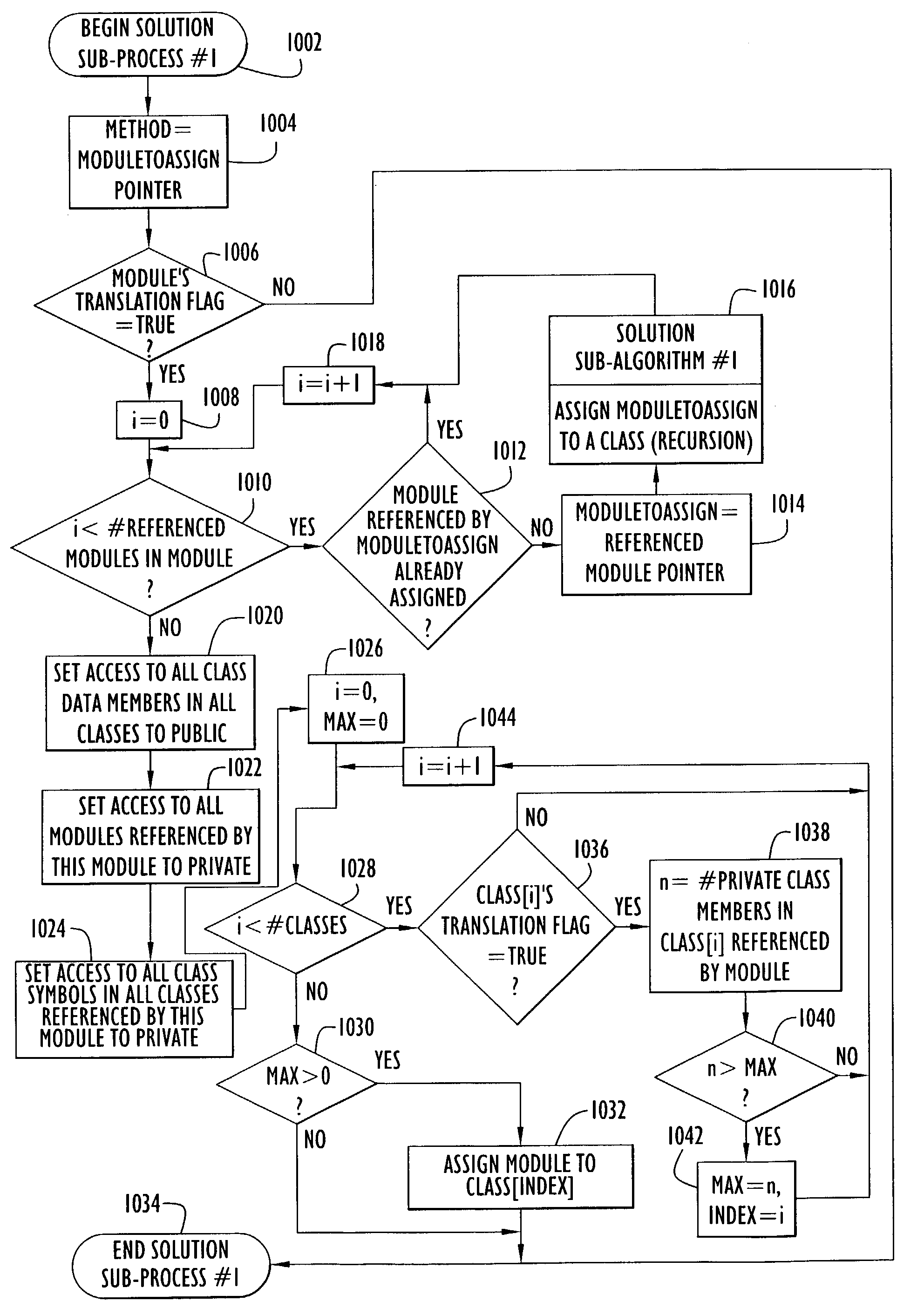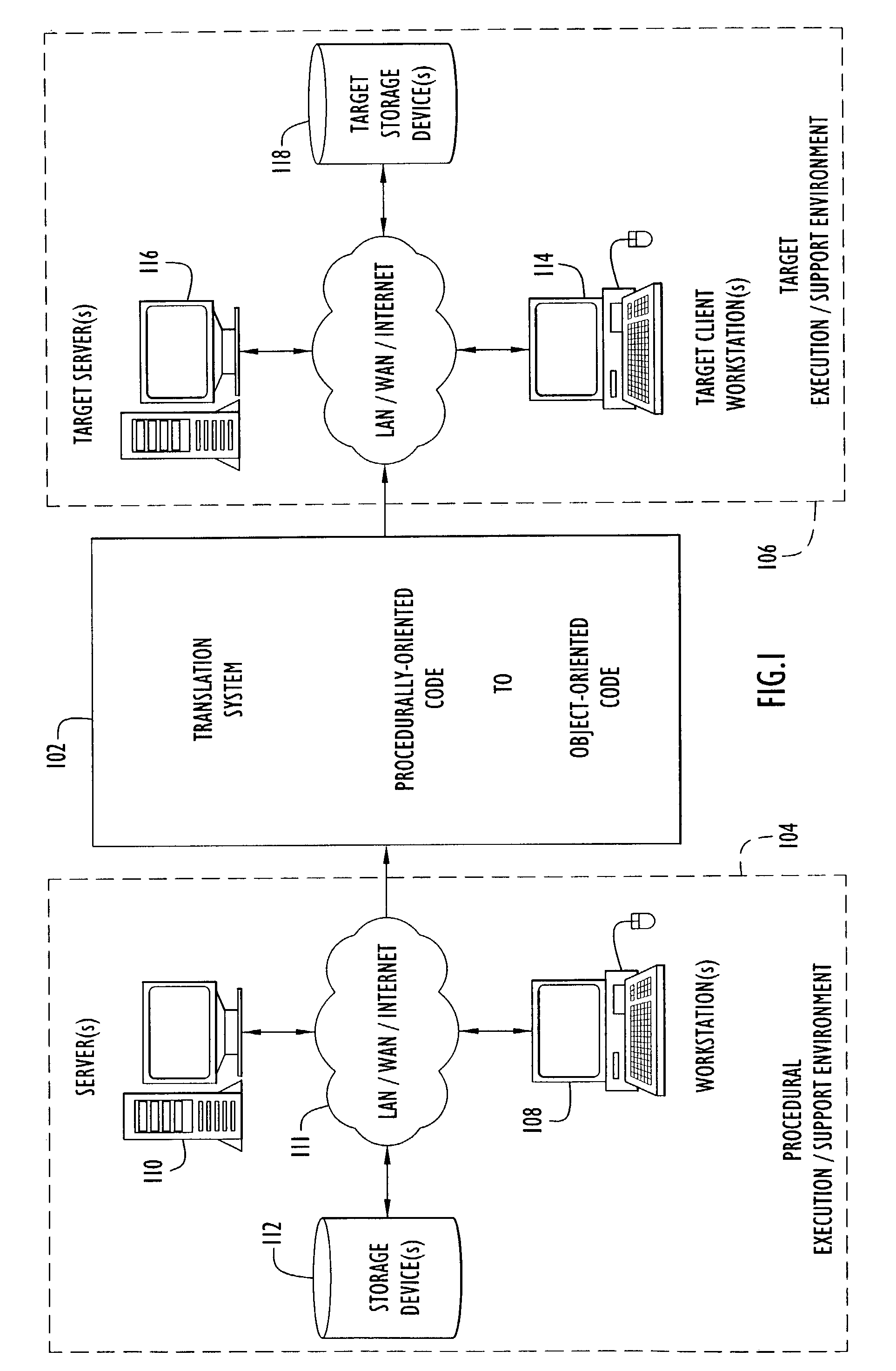Computer language translation system and method of converting procedural computer language software to object-oriented computer language software
a computer language and object-oriented technology, applied in the field of software conversion or translation systems, can solve the problems of legacy system maintenance, inability to implement changes on modern hardware platforms employing present-day operating systems, and shortage of trained personnel capable of implementing changes, so as to reduce the overall system development time and cost
- Summary
- Abstract
- Description
- Claims
- Application Information
AI Technical Summary
Benefits of technology
Problems solved by technology
Method used
Image
Examples
Embodiment Construction
[0038]Referring to FIG. 1, translation system 102 of the present invention expedites the migration of a procedurally-oriented module-based software application executing within a procedural or legacy execution environment 104, to an object-oriented class-based application executing within a selected target execution environment 106.
[0039]A typical procedurally-oriented or legacy application can be a relatively simple application of several hundred to several thousand software lines of code (SLOC) executing upon a single computer workstation 108. Alternatively, a procedural or legacy application can include many thousands or millions of lines of code with application components executing on plural servers or processors 110, coordinating access, for example, from many workstations 108 via a LAN / WAN / Internet network 111 to information stored in plural storage devices 112.
[0040]The translation system of the present invention automatically translates a procedurally-oriented module-based ...
PUM
 Login to View More
Login to View More Abstract
Description
Claims
Application Information
 Login to View More
Login to View More - R&D
- Intellectual Property
- Life Sciences
- Materials
- Tech Scout
- Unparalleled Data Quality
- Higher Quality Content
- 60% Fewer Hallucinations
Browse by: Latest US Patents, China's latest patents, Technical Efficacy Thesaurus, Application Domain, Technology Topic, Popular Technical Reports.
© 2025 PatSnap. All rights reserved.Legal|Privacy policy|Modern Slavery Act Transparency Statement|Sitemap|About US| Contact US: help@patsnap.com



